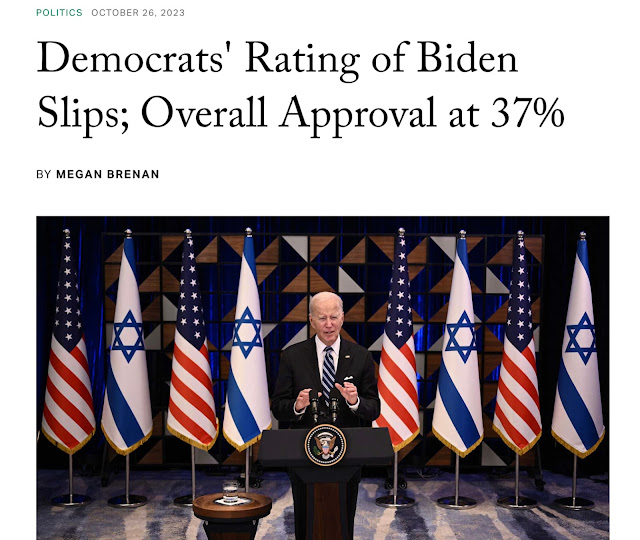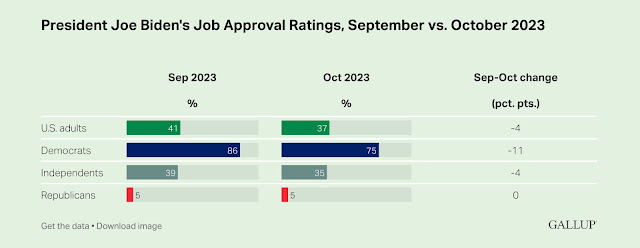This is the second and last of a two-part focus on Third Parties.
The Elections [Structure]
In the October 2, 2023 Progressives Chat, the topic was on Polls. Well, some of these polls do not have a hypothetical two-party matchup for Election 2024 in which the duo add up to the historic average (which I will address). Typically they do not reach that level because, in part, there are plenty of people who will answer such polls with not being willing to vote for either the Republican or the Democrat in that hypothetical matchup. However, in general elections, no matter the two-party matchup…they do.
The first United States presidential election was in 1789. The second was in 1792. From that point forward, U.S. presidential elections have been scheduled in leap years. Since 1824, the U.S. Popular Vote has been recorded.
In the 50 U.S. presidential elections of 1824 to 2020, which have included the U.S. Popular Vote, the average combined percentage of the two-party matchup has been 93.89 percent.
This takes into account that, in Election 1912, Republican incumbent William Howard Taft was unseated so badly, by Democratic challenger Woodrow Wilson, that Taft actually finished in third place. The previous Republican-affiliated U.S. president Teddy Roosevelt, as the Progressive Party nominee, finished in second place. So, in this case, I counted the two top vote-getters to factor these numbers.
(My source for these past U.S. presidential elections is Wikipedia. Some sources can vary reporting the last number or two following the decimal point of a whole number. But, I am OK with this source for this particular topic.)
It turns out, historically, the average percentage of the U.S. Popular Vote by third-party candidates has been 6.11 percent. Mind you…this isn’t just one third-party nominee, with each of the past 50 election cycles, but the combined percentage of all votes to all candidates outside the two major political parties (or two top vote-getters).
Since my birth year 1971, and with Election 1972 the first in my life, there has been a period of 48 years and 13 election cycles. From this, the average percentage of the two-party vote has been 95.48 percent…with 4.52 percent combined for all candidates outside the two major parties.
When I look at information on percentage-points margins, like a poll report saying a candidate is leading by +5 percentage points nationwide, I tend to think of the general-election scenario as 51 to 46 percent or 52 to 47 percent in the U.S. Popular Vote. For good reasons.
Since Election 1972, 8 of the 13 cycles have seen the two-party matchup combine for 97 to 99 percent in the U.S. Popular Vote…leaving a small buffer of 1 to 3 percent combined for all candidates outside the two major political parties. 10 of the 13 cycles have seen the two-party matchup over that historic average of 93.89 percent in the U.S. Popular Vote. (Only in 1980, 1992, and 1996 was the two-party U.S. Popular Vote under that historic average of 93.89 percent. Just the latter two elections were under 90 percent.)
When reflecting even further, I looked at 20th-century U.S. presidential elections in which anything on the map was carried by third-party candidates. (1992 Independent Ross Perot received 18.91 percent in the U.S. Popular Vote and carried no states and electoral votes…and he finished second in Maine and Utah.) Turns out there were four such elections. They appear in the above image.
What tends to carry electorally for third-party candidates are states which are/were, in present time, aligned to the political party to which that third-party candidate is/was closer.
Consider:
• In 1912, Progressive Party nominee and former Republican U.S. president Teddy Roosevelt (with 27.40 percent in the U.S. Popular Vote) carried: California, Michigan, Minnesota, Pennsylvania, South Dakota, and Washington. (This was in a period in which Republicans had alignment outside the South.)
• In 1924, Progressive Party nominee Robert La Follette Sr. (with 16.61 percent in the U.S. Popular Vote) carried the state he governed and in which he had been one of its U.S. senators (as he was affiliated with the Republican Party): Wisconsin.
• In 1948, States’ Rights nominee and Democratic Party member of the U.S. Senate Strom Thurmond (with 2.41 percent in the U.S. Popular Vote) carried: Alabama, Louisiana, Mississippi, and his home state South Carolina.
• In 1968, George Wallace (with 13.53 percent in the U.S. Popular Vote) was the American Independent nominee in spite of having affiliated with the Democratic Party. He carried states then-aligned to that party (when they had the more general alignment in the South): his home state Alabama, which he had governed, as well as Arkansas, Georgia, Louisiana, and Mississippi.
I sense that, if we are to get a coming U.S. presidential election cycle in which a third-party candidate could carry on the map, the outcome would be in a similar vein. For example: Had Election 2016 seen Libertarian Party nominee Gary Johnson carry a state, it would have been one aligned to the Republican Party. Likewise that year’s Green Party nominee, Jill Stein, who would have likely carried a state aligned to the Democratic Party.
This is a very structured system. Which may be a kind way of stating it. The conclusion I have reached is this: While it is good to be informed, for as much as one can ask of himself (with regard for this topic), it is still important to handle one’s voting however one will. If one chooses to vote outside the two major U.S. political parties…one may do so regardless of historic, electoral pattern.






